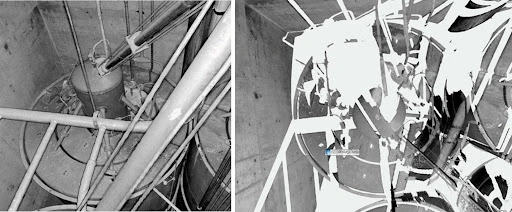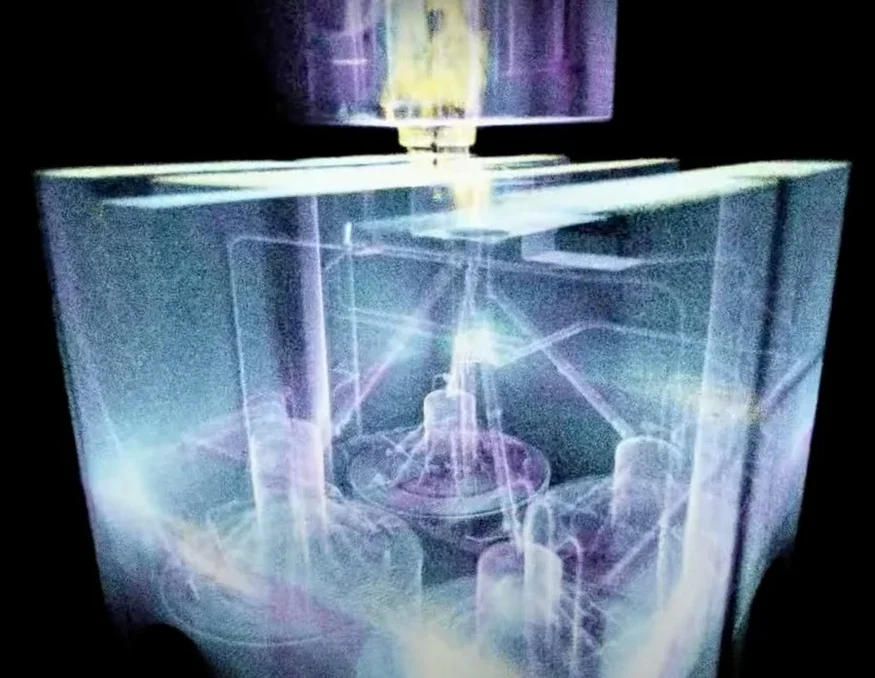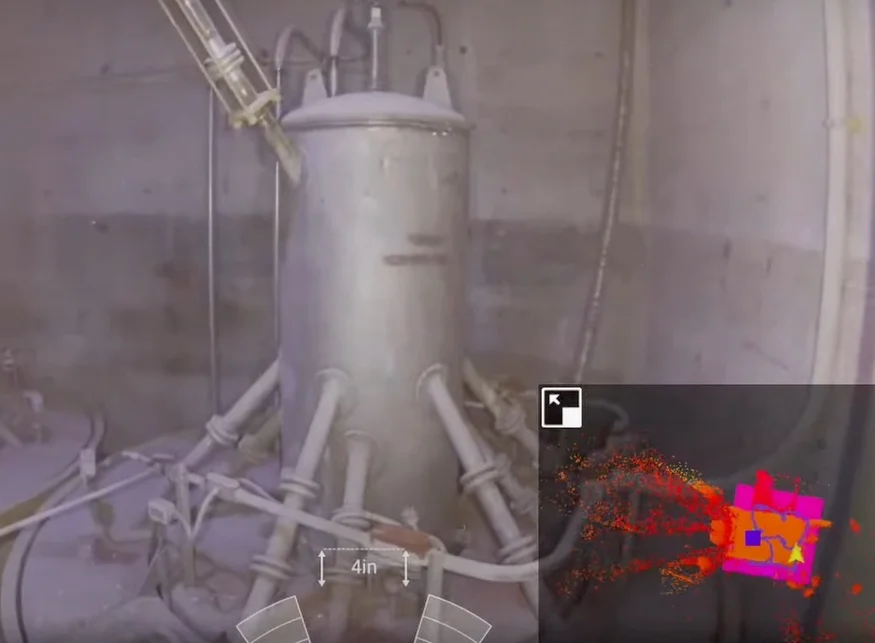Best Tool for the Job After extensive research, the Idaho Environmental Coalition (IEC), under contract with the Department of Energy (DOE), found that the Elios 3 was the ideal solution for mapping the interior of an underground vault storing nuclear waste from the 1960s. Detailed 3D Mapping The Elios 3 generated a high-resolution 3D map of the vault, providing the necessary precision for planning the safe removal of nuclear waste. Speed In just seven minutes, the IEC collected all the LiDAR data needed for 3D mapping, marking the culmination of over a year of preparation and research. In the 1950s, the U.S. Department of Energy (DOE) contracted with the state of Idaho to store 4,400 cubic meters (14,436 cubic feet) of nuclear waste at the Idaho Nuclear Technology and Engineering Center. This waste, known as calcine, is a highly radioactive granular material derived from spent nuclear fuel. It is stored in six underground vaults, each containing sealed bins. In 2015, as the DOE's contract with Idaho approached renewal, the state decided to remove the waste. This meant the DOE had to find a new storage location and develop a safe method for its retrieval. The challenge lay not only in handling the radiation but also in navigating the complex and poorly documented layout of the vaults. The Idaho Environmental Coalition (IEC) was tasked with planning the safe removal of the calcine. Their approach involved drilling holes into the vault’s top, welding pipes to the bins, and using a plasma cutter to access the contents. These pipes would then be used to pneumatically extract the waste remotely, minimizing exposure risks for workers. However, the original blueprints of the vaults were incomplete, making it difficult to plan where to drill. The IEC initially tried using a handheld LiDAR sensor on a tripod, but the resulting 3D maps had significant gaps due to limited sensor placement options. Incomplete 3D maps made with the handheld LiDAR data To overcome these challenges, the IEC explored multiple solutions, including articulating arms, helium blimps, and drones. After evaluating five different methods based on factors like technical risk, budget, and project schedule, they chose Flyability’s Elios 2. But when they learned about the upcoming release of the Elios 3, which featured a LiDAR sensor, they opted for the newer model. The IEC built a life-sized replica of the vault to test their equipment and train drone pilots. They spent months planning the mission with stakeholders to ensure every detail was covered. The training included flying the Elios 3 in a controlled environment to simulate real conditions. Watch this video to see highlights from the training: On the day of the mission, the weather was cold and windy, while the vault interior was hot—ranging from -11°C (12°F) outside to over 38°C (100°F) inside. These temperature fluctuations posed a challenge for the drone’s performance and battery life. A large tent was set up over the vault entrance to comply with FAA and DOE regulations. A crane was used to lift the heavy cover, and a hatch was opened for the drone to enter. The pilot was nervous, knowing the drone couldn’t be retrieved if it failed. Despite the challenges, the flight was a success. In just seven minutes, the IEC collected all the LiDAR data needed. A second flight was conducted to gather additional data, which was also successful. The data was processed using Flyability’s Inspector 4.0 and GeoSLAM Connect software, producing accurate and detailed 3D models. A screenshot of the 3D model made with the LiDAR data collected in the vault The IEC team gained crucial insights from the data, allowing them to proceed with planning the extraction process. The mission was completed efficiently, demonstrating the power of the Elios 3 in challenging environments. An image taken inside the vault alongside the Elios 3's 3D Live Map During a third experimental flight, the drone carried an added weight of a dosimeter. Unfortunately, it lost lift and became stuck on a piece of metal. However, it transmitted a maximum radiation reading of 7 Gy/h before the battery died. Experts confirmed there was no danger to safety or the bin structure. With the successful mapping of the vault, the IEC is now ready to plan the removal of the calcine using the pneumatic pipe method. All six vaults will eventually need to be emptied, a task that will require several more months of planning and coordination. The success of the Elios 3 has already led the IEC and the DOE to consider using it for future remote 3D mapping tasks in confined spaces. This mission marks a significant step forward in safely managing nuclear waste and setting a new standard for drone-based solutions in hazardous environments. Mouth Guard Holder ,Mouthguard Container ,Dental Guard Case ,Bite Guard Case Ningbo Hinix Hardware Industry & Trade Co., Ltd , https://www.hinixpack.comElios 3 Used to 3D Map Irradiated Storage Vault at DOE Site
Key Benefits in a Nutshell
Introduction
Customer Needs

Solution
Results

Key Benefits Realized

Conclusion